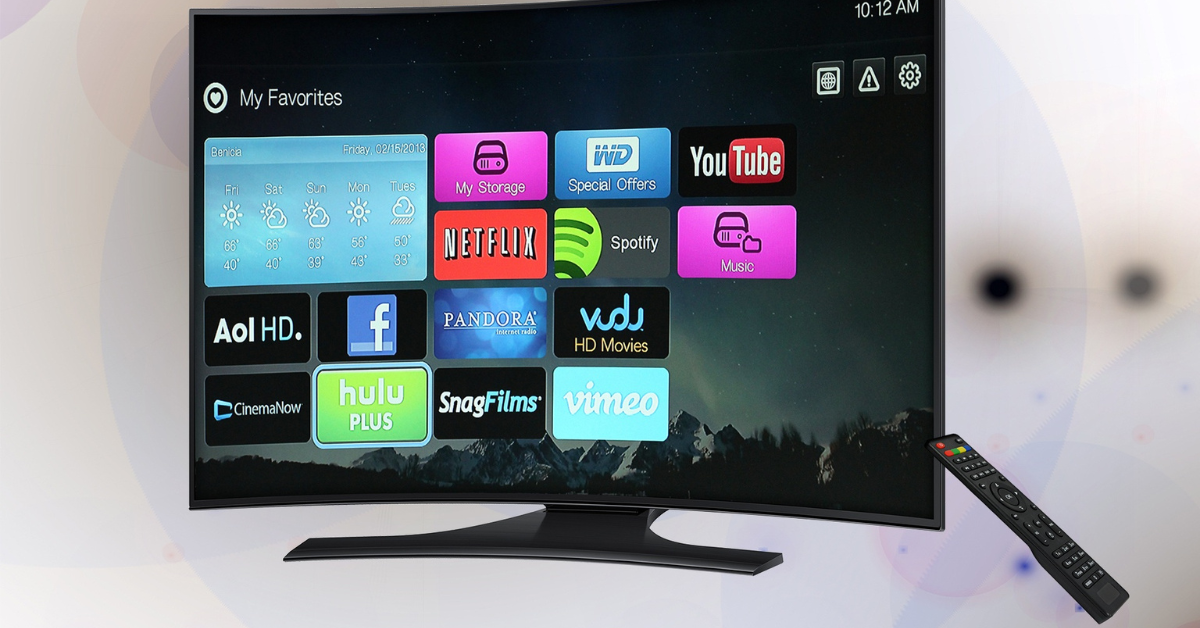The Shifting Media Landscape: Why Businesses Should Prioritize CTV and Radio Advertising
Digital advertising is undergoing a major transformation, with businesses experiencing diminishing returns on Google search-based advertising and increasing effectiveness from Connected TV (CTV) and radio advertising.
The decline in Google search traffic to external websites, coupled with the growth of CTV and radio audiences, indicates a shift in consumer behavior that businesses must account for in their marketing strategies.
Today we will examine data from Search Engine Land and Nielsen, highlighting how CTV and radio outperform search-based advertising in audience engagement, cost efficiency, and return on investment (ROI).
Declining Effectiveness of Google Search Advertising
One of the most significant trends in digital marketing is the decline of external traffic from Google search.
According to a zero-click search study by SparkToro, nearly 60% of all Google searches in the U.S. and EU result in no clicks to external websites (Goodwin).
This means that the majority of users either find answers directly in Google's AI-generated summaries, featured snippets, and Google-owned properties (YouTube, Google Maps, etc.), or refine their queries without visiting an external page.
Additionally, only 36% of clicks from Google searches go to the open web, while nearly 30% of clicks remain within Google’s own ecosystem (Goodwin).
This shift indicates that businesses relying on search engine optimization (SEO) or paid search ads are seeing reduced visibility, increased competition, and lower conversion rates.
Furthermore, advertising costs on Google have risen significantly due to increased competition and algorithmic changes. The cost-per-click (CPC) for Google Ads has increased year over year, making it more expensive for businesses to achieve the same results they once did.
As search ads become costlier and less effective, businesses must explore alternative high-ROI advertising platforms like CTV and radio.
The Rise of Connected TV (CTV) as an Advertising Powerhouse
Unlike traditional linear television, CTV offers digital targeting capabilities similar to online advertising while maintaining high audience engagement. According to Nielsen, CTV has accounted for over 36% of total TV usage in the U.S. since mid-2023 (Nielsen, Amid the Fragmented TV Landscape).
The adoption of CTV devices has surged, now reaching 75% of U.S. households, compared to just 58% in 2020 (Nielsen).
This shift is particularly pronounced among younger audiences:
- 80.2% of 12-17-year-olds’ total TV usage is on CTV.
- 73.6% of 21-34-year-olds’ total TV usage is on CTV.
- 56.8% of 25-54-year-olds’ total TV usage is on CTV (Nielsen).
These figures indicate that CTV is now the dominant platform for reaching key consumer demographics, particularly millennials and Gen Z, who are increasingly disengaging from traditional TV and even social media advertising.
Another major advantage of CTV advertising is higher engagement and ad recall. Unlike Google search ads, which users can scroll past, or social media ads, which can be skipped, CTV ads are full-screen, non-skippable, and play before or during premium content.
Additionally, CTV advertising allows for advanced audience targeting, including geolocation, behavioral data, and past viewing history, making it significantly more effective than the broad targeting of traditional TV.
Marketers are recognizing the value of CTV, with 45% of advertising budgets being shifted to CTV in 2023 (Nielsen, Annual Marketing Report). As advertising budgets shift away from search and traditional TV, businesses that invest in CTV will benefit from higher visibility and improved audience engagement.
The Unmatched Effectiveness of Radio Advertising
While CTV is capturing digital advertising budgets, radio remains one of the most effective and cost-efficient advertising mediums.
According to Nielsen, 91% of U.S. adults listen to AM/FM radio weekly, making it the most widely consumed traditional media format after digital (Nielsen, National Radio Report). Additionally, radio listening is less fragmented than digital platforms, allowing for a consistent and engaged audience.
Radio advertising is particularly beneficial for local businesses, as it reaches consumers at critical decision-making moments—while they are driving, commuting, shopping, or at work.
Compared to Google search ads, which only appear when a user actively searches, radio ads create brand awareness before a need arises, increasing the likelihood that listeners remember and choose a business when making a purchase decision.
Studies show that radio advertising delivers a 60% higher brand recall rate than social media ads (Edison Research). Furthermore, radio ad campaigns have been shown to drive a 22% increase in foot traffic to brick-and-mortar stores compared to digital-only campaigns (BIA Advisory Services).
Additionally, radio advertising is significantly more cost-effective than digital search advertising. Businesses typically see a return of $6 in revenue for every $1 spent on radio ads, making it one of the highest-ROI advertising channels available (Radio Advertising Bureau).
The Case for Combining CTV and Radio Advertising
Given the declining effectiveness of Google search advertising and the growing impact of CTV and radio, businesses should consider an integrated advertising approach that leverages the strengths of both platforms.
- CTV provides high-quality, visual storytelling and audience targeting to engage potential customers in a digital, non-skippable format.
- Radio reinforces brand awareness and recall, ensuring that businesses remain top-of-mind at the moment of purchase.
By combining CTV’s precise audience targeting with radio’s unmatched local reach and influence, businesses can create a high-impact advertising strategy that outperforms Google search ads and social media advertising.
A Strategic Shift Away from Google Search Ads
The data from Search Engine Land and Nielsen clearly illustrate a major transformation in media consumption.
Google search advertising is no longer a guaranteed source of web traffic, as nearly 60% of searches end without clicks, and Google is prioritizing its own ecosystem over external websites. At the same time, CTV and radio are emerging as dominant advertising platforms, providing higher engagement, greater audience reach, and better ROI.
For businesses seeking effective, scalable, and measurable advertising, investing in CTV and radio is a smarter strategy than relying solely on Google search and paid search ads.
By shifting ad budgets toward CTV and radio, companies can achieve better brand awareness, stronger consumer engagement, and improved overall marketing performance.
Works Cited
BIA Advisory Services. Radio Advertising Trends and ROI Analysis, 2023.
Edison Research. Radio and Audio Media Report, 2024.
Goodwin, Danny. "Nearly 60% of Google Searches End Without a Click in 2024." Search Engine Land, 2 July 2024, https://searchengineland.com/nearly-60-of-google-searches-end-without-a-click-in-2024.
Nielsen. Amid the Fragmented TV Landscape, Time Spent with Content Is the Best Planning Data There Is, 2024, https://www.nielsen.com/insights/2024/amid-the-fragmented-tv-landscape-time-spent-with-content-is-the-best-planning-data-there-is.
Nielsen. Annual Marketing Report: CTV and Digital Trends, 2023.
Nielsen. National Radio Report: U.S. Media Consumption Trends, 2024.
Radio Advertising Bureau. The ROI of Radio Advertising for Businesses, 2023.
SparkToro. Zero-Click Search Trends and Search Engine Traffic Analysis, 2024.



